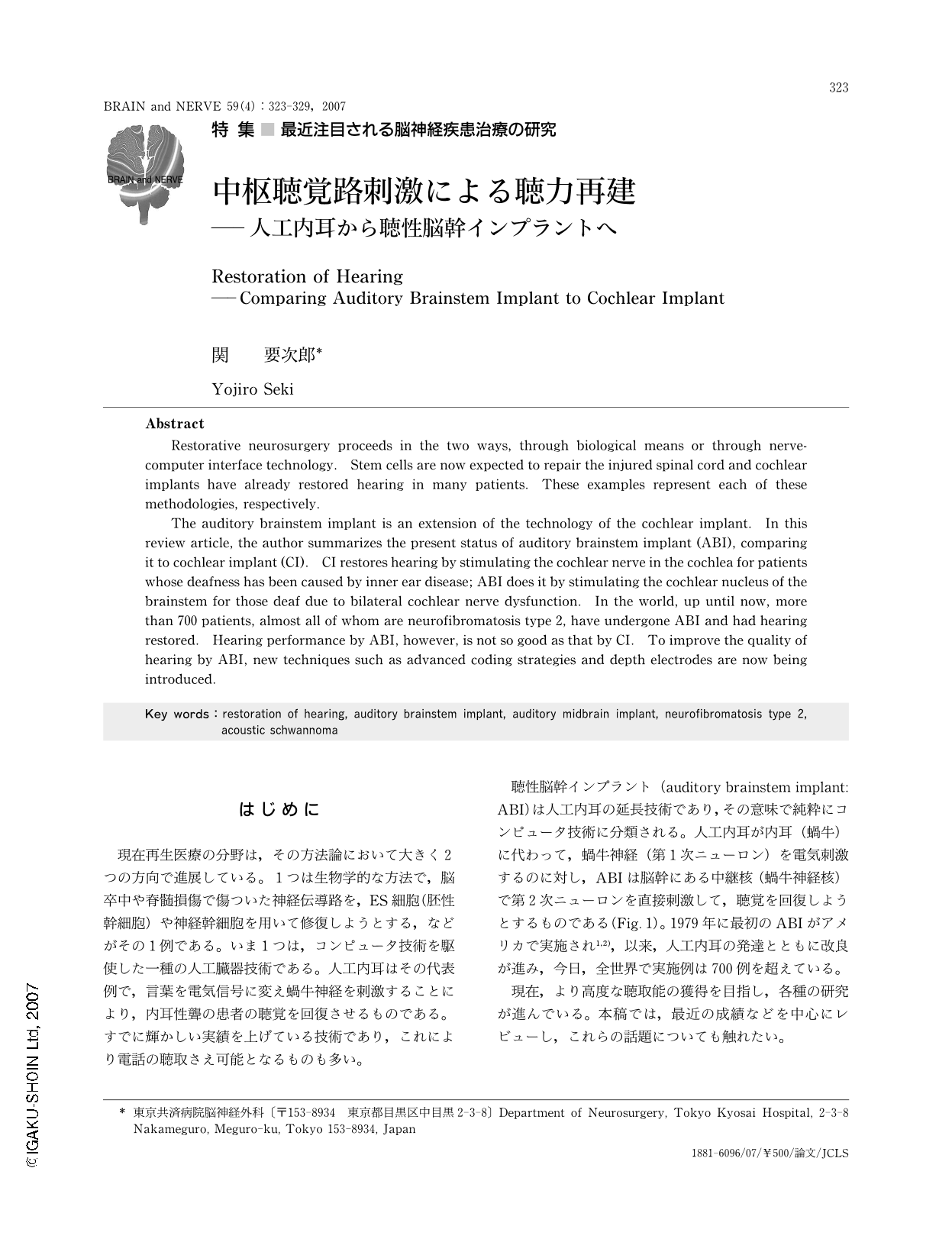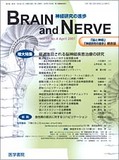Japanese
English
- 有料閲覧
- Abstract 文献概要
- 1ページ目 Look Inside
- 参考文献 Reference
はじめに
現在再生医療の分野は,その方法論において大きく2つの方向で進展している。1つは生物学的な方法で,脳卒中や脊髄損傷で傷ついた神経伝導路を,ES細胞(胚性幹細胞)や神経幹細胞を用いて修復しようとする,などがその1例である。いま1つは,コンピュータ技術を駆使した一種の人工臓器技術である。人工内耳はその代表例で,言葉を電気信号に変え蝸牛神経を刺激することにより,内耳性聾の患者の聴覚を回復させるものである。すでに輝かしい実績を上げている技術であり,これにより電話の聴取さえ可能となるものも多い。
聴性脳幹インプラント(auditory brainstem implant: ABI)は人工内耳の延長技術であり,その意味で純粋にコンピュータ技術に分類される。人工内耳が内耳(蝸牛)に代わって,蝸牛神経(第1次ニューロン)を電気刺激するのに対し,ABIは脳幹にある中継核(蝸牛神経核)で第2次ニューロンを直接刺激して,聴覚を回復しようとするものである(Fig.1)。1979年に最初のABIがアメリカで実施され1,2),以来,人工内耳の発達とともに改良が進み,今日,全世界で実施例は700例を超えている。
現在,より高度な聴取能の獲得を目指し,各種の研究が進んでいる。本稿では,最近の成績などを中心にレビューし,これらの話題についても触れたい。
Abstract
Restorative neurosurgery proceeds in the two ways, through biological means or through nerve-computer interface technology. Stem cells are now expected to repair the injured spinal cord and cochlear implants have already restored hearing in many patients. These examples represent each of these methodologies, respectively.
The auditory brainstem implant is an extension of the technology of the cochlear implant. In this review article, the author summarizes the present status of auditory brainstem implant (ABI), comparing it to cochlear implant (CI). CI restores hearing by stimulating the cochlear nerve in the cochlea for patients whose deafness has been caused by inner ear disease; ABI does it by stimulating the cochlear nucleus of the brainstem for those deaf due to bilateral cochlear nerve dysfunction. In the world, up until now, more than 700 patients, almost all of whom are neurofibromatosis type 2, have undergone ABI and had hearing restored. Hearing performance by ABI, however, is not so good as that by CI. To improve the quality of hearing by ABI, new techniques such as advanced coding strategies and depth electrodes are now being introduced.

Copyright © 2007, Igaku-Shoin Ltd. All rights reserved.


